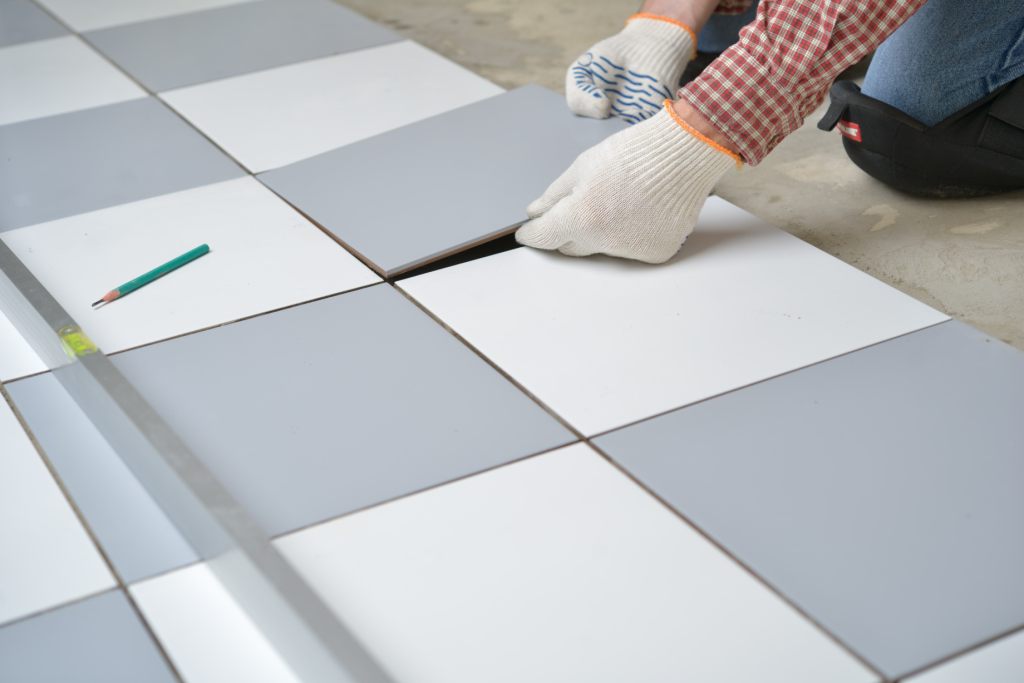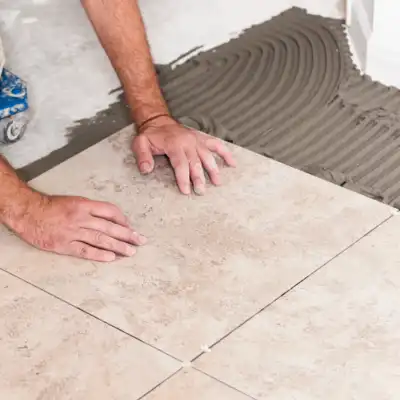Your Trusted Partner for Tile Installation Austin and Beyond
Your Trusted Partner for Tile Installation Austin and Beyond
Blog Article
Discover the Secrets to Perfect Ceramic Tile Installation Every Time
Grasping the art of floor tile setup involves a series of precise steps and methods that, when carried out properly, can result in a seamless and sleek coating. By understanding the tricks behind each step, you can guarantee that your floor tile installation not just meets yet surpasses your expectations.
Appropriate Surface Preparation
Reliable ceramic tile setup hinges significantly on precise surface area prep work to make sure a flawless end result. The surface must be clean, dry, and structurally appear to avoid future concerns such as loose ceramic tiles or broken grout.
To guarantee appropriate attachment, it is recommended to roughen smooth surface areas with sanding or scarifying. Furthermore, using a guide can boost bonding between the ceramic tile and the substratum adhesive. Irregular surfaces must be leveled using a self-leveling substance to protect against lippage and guarantee a smooth surface.
Moreover, looking for prospective sources of wetness is important, as excess moisture can lead to mold and mildew growth and damages the tiles in time. Utilizing a wetness obstacle or waterproofing membrane in damp areas like kitchens or restrooms is necessary to shield the tiles from water damages. By diligently preparing the surface prior to tile installation, one can develop a sturdy and aesthetically attractive tiled location that will stand the test of time.

Selecting the Right Adhesive
Picking the proper adhesive is an essential step in guaranteeing the successful installation of floor tiles. The kind of glue you choose will rely on various factors such as the type of ceramic tile, the substratum material, and the place of the installment. There are various types of adhesives offered in the market, including thin-set mortar, mastic, and epoxy.

Epoxy adhesives are incredibly durable and water-resistant, making them optimal for locations prone to moisture such as bathrooms or cooking areas. They are also appropriate for installing glass or metal floor tiles. When choosing a glue, ensure to comply with the supplier's suggestions and take into consideration the details needs of your tile setup task.
Precision Reducing Techniques
One of the most typical devices utilized for accuracy cutting in tile installment is the tile cutter. Floor tile cutters come in numerous types, including hand-operated tile cutters, electric damp saws, and handheld tile cutters. Hands-on ceramic tile cutters are ideal for straight cuts on ceramic and porcelain floor tiles, providing exact and tidy sides.
Additionally, making use of a floor tile nipper enables thorough cuts and shaping around barriers or irregular shapes. Wet tile saws equipped with diamond blades are exceptional for making curved cuts, cutouts for fixtures, or detailed designs. In addition, utilizing devices like floor tile scribes or glass cutters can aid in racking up and breaking floor tiles with accuracy. By understanding these accuracy cutting methods, floor tile installers can make certain a specialist finish and a visually attractive outcome in their tile tasks.

Cement Application Tips
When transitioning from precision cutting strategies to grout application in ceramic tile installation, interest to information and technique is vital for accomplishing a flawless surface. Grout serves not only as a useful component that fills the voids in between tiles however likewise plays a considerable function in the general visual of the setup.
When using cement, operate in little areas at once to prevent it from drying out as well rapidly. Utilize a rubber float to press the grout right into the joints at a 45-degree angle, making certain full protection and condensing the product. Once the cement is applied, make use of a wet sponge to clean the floor tiles, ensuring not to get rid of use this link cement from the joints. Buff the tiles with a completely dry towel to remove any haze and attain a refined surface. Following these grout application ideas will certainly result in a skillfully set up floor tile surface area that enhances the appeal of any room.
Finishing Touches and Upkeep
To finish the tile installment job properly, attention to information throughout the completing touches and routine maintenance is critical. After the cement has actually dried out and the tiles are securely in place, the final steps involve making certain that all sides are properly sealed.
Regular upkeep is essential to protecting the charm and capability of your tiled surfaces. A straightforward routine of sweeping or vacuuming adhered to by mopping with a mild cleaner can help keep your floor tiles looking beautiful (tile installation austin). For locations that are regularly revealed to wetness, such as shower rooms or kitchens, regular resealing of cement lines is suggested to protect against mold and mold development
Conclusion
In final thought, attaining ideal ceramic tile installment every single time calls for interest to detail and appropriate techniques. By focusing on surface area prep work, choosing the proper adhesive, using accuracy reducing techniques, using grout thoroughly, and completing his comment is here with interest to detail, you can make certain a professional-looking outcome. Keep in mind to follow these steps and keep your floor tiles frequently to prolong their lifespan and maintain them looking their ideal.
One of the most common tools utilized for precision cutting in tile installation is the tile cutter. Tile cutters come in numerous kinds, including hands-on floor tile cutters, electrical wet saws, and portable tile cutters. Hand-operated floor tile cutters are suitable for straight cuts on this contact form ceramic and porcelain tiles, giving tidy and exact sides. Additionally, using tools like floor tile scribes or glass cutters can assist in racking up and snapping tiles with precision. By mastering these precision cutting methods, ceramic tile installers can guarantee a professional finish and a visually attractive result in their floor tile projects.
Report this page